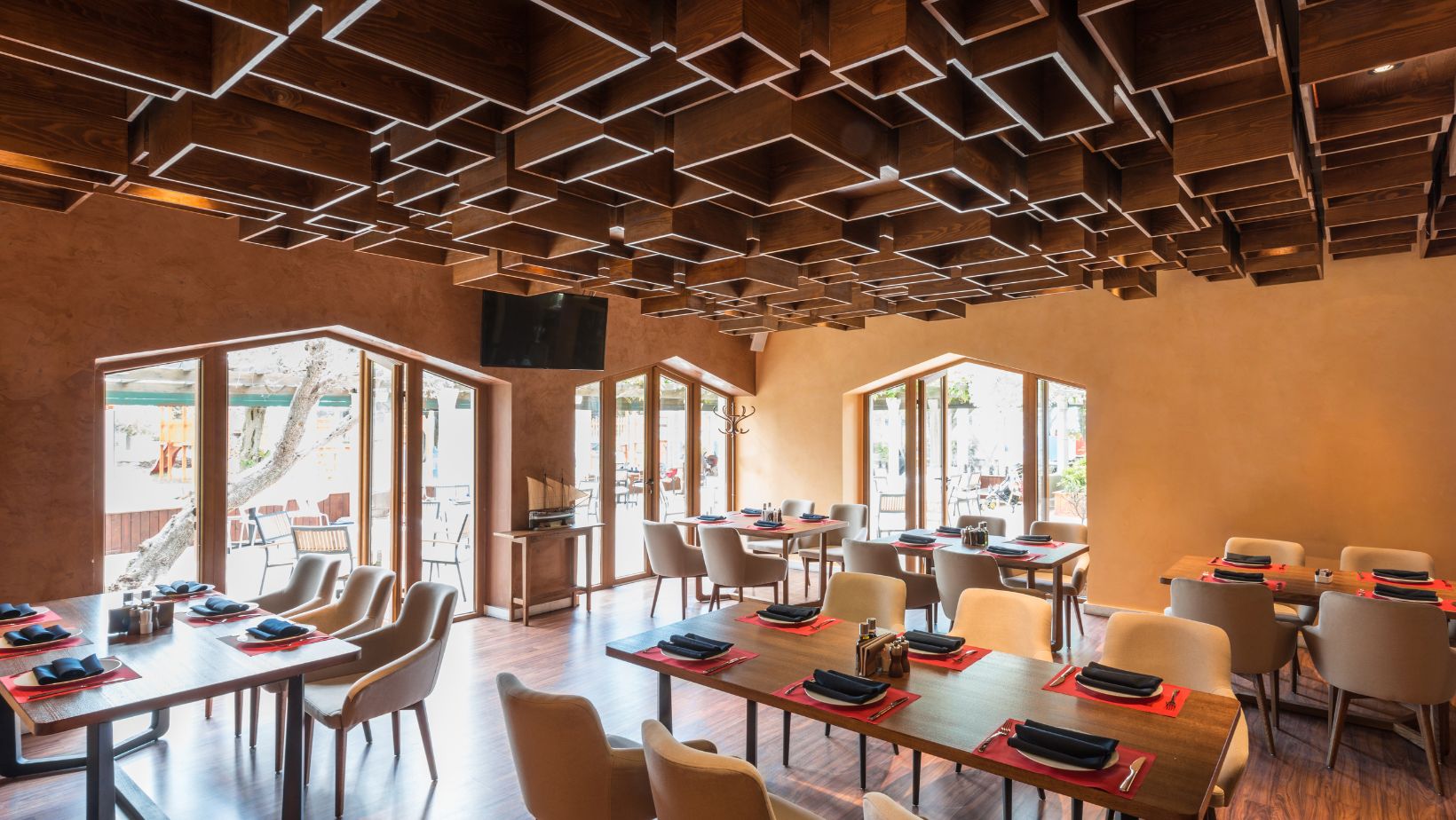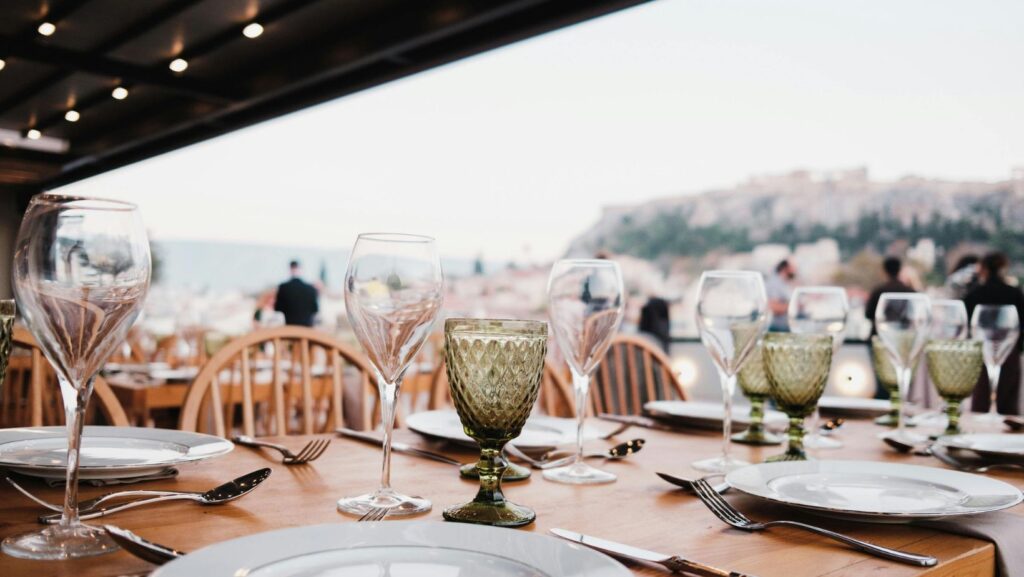A guest’s first impression of a dining space often begins before they taste anything or hear the music. It begins at the table. The way light falls across a wooden surface, the texture beneath the fingertips, and the colors that frame a meal all contribute to an experience that feels both personal and memorable. In the modern era of hospitality, the design of commercial-quality restaurant tables and table tops has become an essential part of storytelling. It is where atmosphere meets intimacy, and where design choices quietly shape how guests connect with a space.
Restaurants, cafés, and hotels are beginning to see the tabletop not as a static piece of furniture but as the emotional centerpiece of the room. A well-crafted surface has the power to comfort, impress, and even influence how long guests stay. The warmth of the material, the shape of the edge, and the subtle interplay between light and color define the character of a meal before it ever arrives. This shift in awareness has transformed table design from a functional necessity into a craft rooted in psychology, aesthetics, and experience.
As hospitality spaces evolve to reflect individuality and comfort, tabletop trends are revealing a growing desire for authenticity, connection, and tactile beauty. Each new design direction speaks to a deeper cultural shift, one that values feeling as much as form.
The Return of Natural Materials
Wood is once again the heart of dining design. Its natural warmth and imperfections evoke a sense of grounding that synthetic materials often lack. Whether it is the subtle grain of walnut, the rustic character of oak, or the refined polish of maple, wood adds emotional depth to the dining experience. It reminds guests of nature, of calm, and of craftsmanship.

Designers are pairing these organic surfaces with modern finishes that protect without masking their natural beauty. The goal is longevity that doesn’t come at the expense of charm. Stone, marble, and reclaimed materials are also making a strong appearance, balancing durability with timeless elegance. The tactile richness of these surfaces encourages touch, creating a sensory experience that complements the meal itself.
Warmth Through Color and Texture
Color psychology plays a quiet but powerful role in how guests perceive comfort. The stark whites and greys of the minimalist era are giving way to softer, earth-inspired tones. Muted terracottas, honeyed browns, and creamy neutrals are defining contemporary tabletops. These colors diffuse light gently, creating spaces that feel lived in and inviting rather than cold or sterile.
Texture is also taking center stage. Matte finishes, brushed grains, and softly burnished surfaces help create visual depth. When paired with ambient lighting, these textures come alive, producing a glow that makes guests linger longer. A thoughtfully designed table does more than hold plates; it holds moments.
The Rise of Personalization
Hospitality is becoming increasingly intimate, and personalization is shaping how guests connect with design. Restaurants are experimenting with custom inlays, engraved patterns, and subtle branding details that align with their story. Some tables feature hand-painted motifs or embedded local materials that reflect regional identity. This level of detail transforms an everyday object into something meaningful.
Personalization also extends to scale and proportion. Tables are being designed to fit the rhythm of conversation, ensuring that spacing feels natural and inclusive. In an age where dining experiences are often shared online, these personalized touches become part of a restaurant’s visual identity, warm, memorable, and unmistakably human.
Blending Function and Ambiance
Modern dining demands functionality that complements beauty. Tabletops are now designed to withstand heavy use while maintaining a sense of refinement. Heat-resistant coatings, antimicrobial finishes, and moisture-sealed edges make maintenance easier without sacrificing aesthetic value. Behind each visual detail lies a practical layer of engineering that ensures durability.
Designers are also exploring the relationship between tabletop design and spatial flow. The height of a table, the width of its edge, and the finish of its surface can influence how comfortable guests feel. Rounded corners invite movement and interaction, while clean lines bring clarity and structure. The best spaces balance these qualities seamlessly, creating environments where design quietly supports hospitality.
Sustainability as an Expression of Care
Sustainability has moved from conversation to commitment in restaurant design. Guests today care deeply about where materials come from and how they are made. Reclaimed wood, recycled metals, and responsibly sourced laminates are becoming signatures of conscientious design. Tables built with these materials tell a story of respect for nature, for craftsmanship, and for community.
This respect extends beyond materials to longevity. The idea of furniture as an investment rather than a disposable accessory reflects a broader shift in how the industry values quality. A well-made table that lasts decades carries more meaning than one replaced every few years. Sustainability, in this context, becomes an act of hospitality toward the future.
Light, Mood, and the Art of Atmosphere
Lighting has become inseparable from tabletop design. The way illumination interacts with surface texture determines how food appears and how comfortable guests feel. Soft, diffused lighting highlights the natural qualities of wood and stone, while reflective finishes create a subtle sparkle that elevates evening settings.
Restaurants are experimenting with layered lighting, using pendant fixtures or candles to create warmth that feels intimate but not dim. The right balance transforms an ordinary dinner into a memorable experience. In this sense, tabletop design becomes a canvas for light, a way to choreograph ambiance and emotion.
A Sense of Home in Every Setting
As the boundary between hospitality and home design continues to blur, the best restaurant interiors now carry a residential warmth. Guests want to feel at ease, surrounded by textures and tones that remind them of comfort. The table, once a symbol of formality, is being reimagined as a shared space, an invitation to slow down and connect.
Designers are using familiar materials and softer silhouettes to achieve this home-like feeling. A table that looks handcrafted, that bears the marks of use, or that features visible joints and natural imperfections tells guests, “You belong here.” The emotional honesty of such design resonates far more than perfection ever could.
The Future of Welcoming Design
In the end, tabletop design is about connection. It is about creating spaces where guests feel seen and welcomed. Each new trend in material, finish, and color is ultimately an exploration of how design can nurture emotion. Warmth, comfort, and authenticity are not just visual choices. They are gestures of hospitality.
The table remains the quiet heart of the dining experience. It gathers stories, laughter, and memory, and it anchors design in the human experience. As trends evolve, one truth remains: the most inviting spaces are those that feel honest. A table, thoughtfully made and warmly designed, does more than complete a room. It completes the moment.



